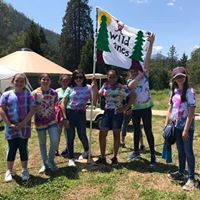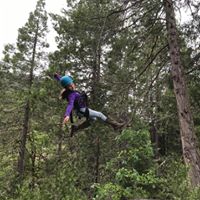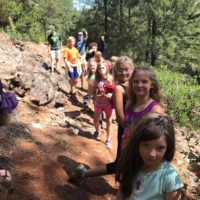Strange, lime-green plants enthrall a group of southern Oregon sixth graders who are away at outdoor school. The plants are shaped like rearing cobras inlaid with red, scaly veins. Curious, the students ask questions and hypothesize. What could these odd plants be up to?
Finally, they pinpoint it: The plants eat bugs. They are standing next to the rare, carnivorous cobra lily, or darlingtonia, which lures and then digests insects into a tube-like opening.
The students might not realize it, but their outdoor school, located at the Siskiyou Field Institute, is truly like none other in Oregon—or on Earth.
That’s because its located on a property that showcases the unique biological wonders of Klamath Siskiyou bioregion—rugged forests, wild streams and rare plants that grow nowhere else.
“It’s a really special spot,” says Sarah Worthington, Director of the Siskiyou Field Institute (SFI), whose mission is to increase the understanding of, and connection to the Klamath-Siskiyou ecoregion through education, scientific research, and public engagement.
With funding from the Gray Family Foundation, the Siskiyou Field Institute completely updated its outdoor school curriculum in 2018 to align with Next Generation Science Standards, common core and the Oregon Environmental Literacy Plan. At the same time, the new curriculum fully utilizes the wild features of SFI’s 850-acre property, located near Selma.
Adjacent to the property, several major fires recently torched swathes of forests, presenting yet another unique learning opportunity. First, students study maps of the fires. Then they traverse the charred remains of trees to observe what’s growing back and discuss the importance of fire to the area’s ecology.
The students also build a model of a forest and actually set it on fire to test how fire behaves, what it needs to burn, and how methods like back-burning can reduce fire severity.
An important salmon-recovery project is also underway on the property’s fish-bearing creeks, where students sample water quality and observe how coho salmon are navigating two barriers, a small dam and culvert. Eventually, these barriers will be removed, and students will get to witness how coho salmon make a comeback on these streams.
With its curriculum updated, SFI’s outdoor school welcomed 340 kids in spring 2019 from the Eagle Point School District and several other schools—most of them Title 1 Schools.
Sarah says that the experience especially benefits those kids who can’t sit still at their school desks, but are highly productive in a nature classroom.
“I’ve heard feedback from teachers again and again, ‘I can’t believe that student did that much work.’ It’s incredible, the effect that it has on those students who don’t fit in those four-wall boxes,” she says.



